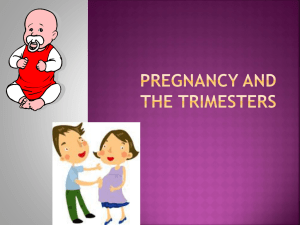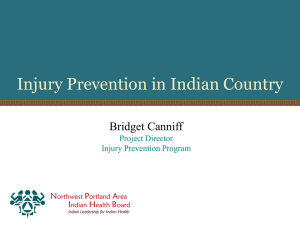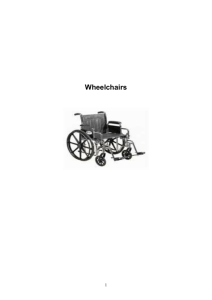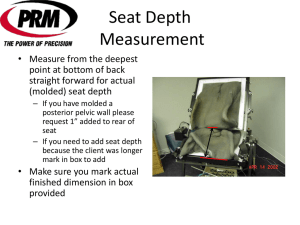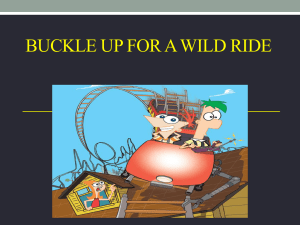Safety Start`s Child Safety Quiz
advertisement
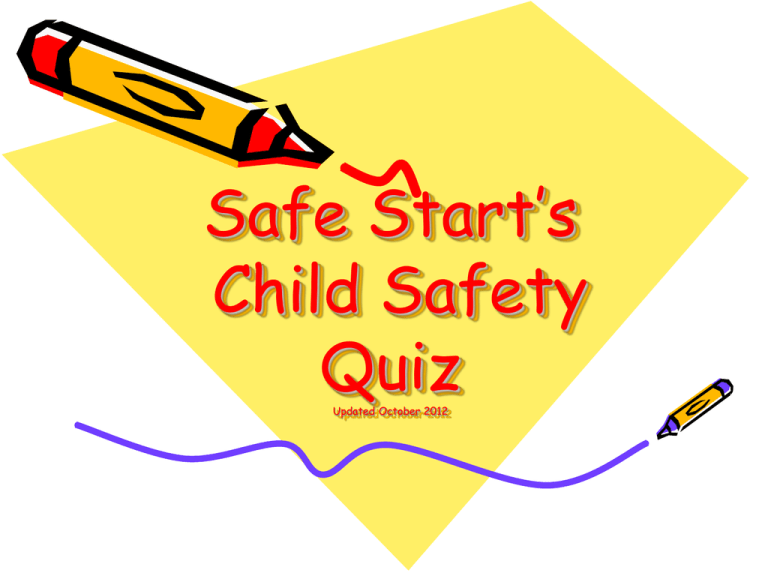
Safe Start’s Child Safety Quiz Updated October 2012 1. Which of the following plants is poisonous? a) Boston fern b) spider plant c) dieffenbachia Answer: c) dieffenbachia. If the plant is chewed, the crystals are released and can cause intense pain and possible swelling of the mouth. Remove this plant from your home if you have young children. Source: BC Drug and Poison Information Centre 3. At what width should you lock an open window to prevent a toddler from falling out? a) 4 inches (10 cms) b) 5 inches (12 cms) c) 6 inches (15 cms) Answer a) 4 inches (10 cms) Children can squeeze through an opening of only 5 inches (12 cms). Lock open windows at no more than 4 inches (10 cms) wide, and never use screens as window guards. The weight of a small child is enough to dislodge a screen from its frame. 4. As of July 1, 2008, BC law requires children over 40 pounds to ride in a booster seats when travelling in vehicles until they… a) weigh over 60 pounds (27 kgs) b) are 4 feet 9 inches tall (145 cms) c) reach their 9th birthday Answer: b or c As at July 1, 2008, Children in BC over 40 lbs (18 kgs) need to ride in a booster seat until they are 4 feet, 9 inches (145 cms) tall or until they reach their 9th birthday. A child can remain in a booster seat until they have outgrown the weight and height limits of the seat. Please note, BCAA Road Safety Foundation recommends children remain in a booster seat until they are over 145 cm (4’9″) even after they’ve reached 9 years of age . 5. As a minimum, at what age and weight is it safe to turn your infant from a rear-facing car seat to a forward-facing car seat? a) 6 months and 15 lbs (7kgs) b) 8 months and 20lbs (9kgs) c) 12 months and 20lbs (9kgs) Answer: c) 12 months and 20 pounds (9 kgs) BC law requires all babies to stay rear-facing in their car seats until at least one year of age and 20 lbs (9kgs). It is recommended that children stay rear-facing longer if allowed by the child car seat manufacturer’s weight limit. If your child reaches the maximum weight limit for his or her infant car seat before one year of age, move them up to a convertible seat and keep it rear-facing. Most convertible car seats have a rear-facing weight limit of at least 30 lbs (14kgs). Source: BCAA Road Safety Foundation 6. Which of these is responsible for the most poisoning deaths among young children? a) medication b) cleaners c) plants Answer a) medications The most common cause of poisoning in young children are from cough and cold medications and pain and fever medications. All medications and vitamins should be kept in a locked cupboard or box, out of reach of young children. Source: BC Poison Control Centre 7. In Canada, which of the following results in the most hospitalizations of children under five years of age? a) falls b) poisonings c) burns Answer a) falls Poisonings are in second place, followed by burns. When scoping your house for safety hazards, focus on sharp edges (such as coffee tables and fireplace hearths), tripping hazards, top-heavy furniture (bookcases and TV stands), staircases, and windows. These are common causes of fallrelated injuries. Source: BC Injury Research & Prevention Unit 9. What is the ideal temperature for a household hot water tank, to prevent scald burns? a) 116º F (46 C) b) 120º F (49 C) c) 140º F (60 C) Answer: b) 120º F (49 C) Hot tap water that is higher than 120 F (49 C) will burn a child in less than a second. Source: Too Hot for Tots! 10. According to BC Children’s Hospital’s Emergency data, which of the following causes the most choking/swallowing incidents among young children? a) coins b) hot dogs c) toy pieces Answer a) coins Coins are the most likely objects in your home to cause choking. Children could swallow them as well. Hide coin jars, and check between the cushions in your couch for loose change. 11. True or false. You should always use a pressure gate at the top of the stairs to prevent falls. Answer: false Although it is very important to put a gate at the top of the stairs, installing a pressure gate can actually increase your baby’s chances of being injured. Instead, use a stair gate that bolts to the wall on both sides, so it cannot be dislodged. The best stair gates are at least 30 inches (76 cms) high and offer no toe-holds for climbing. 13. On average, how many calls about someone being poisoned are made each year to the BC Poison Control Centre? a) 26,000 b) 15,000 c) 10,000 Answer a) 26,000 More than half of poisonings reported in to the B.C. Drug and Poison Information Centre involve children under six years of age. Most poisonings in children happen just before lunch and before dinner when children are hungry and least supervised. Source: BC Drug and Poison Information Centre 15. Which of the following is a risk factor for Sudden Infant Death Syndrome (SIDS)? a) maternal smoking b) sleeping position c) soft, fluffy material in baby’s crib Answer: All of the above Although SIDS is rare, it is one of the most common causes of death in babies between 1 and 12 months of age. Ways to reduce the risks of SIDS is to place babies to sleep on their backs on a firm mattress with no soft bedding and to not expose baby to smoke during and after pregnancy. Babies should also have supervised “tummy time” when they are awake several times a day to prevent a flat spot on their head. Source: BC Health Files 18. On toys, the warning “Do not give to children under three years of age” means what? a) they can be taken apart b) they contain choking hazards c) they have sharp pieces Answer: all of the above Young children, especially those under three years of age, frequently mouth objects. Small toys, balls or loose or broken toy parts are choking hazards. Keep them out of reach. Source: Health Canada (Toy Safety Tips) 19. Where is your child in the most danger of being bitten by a dog? a) at home b) in the playground c) at another’s home Answer a and c Each year thousands of people are hospitalized because of dog bite injuries -- nearly half of them are children under age 10. Dog bites are most likely to be inflicted by the family’s or a neighbour’s dog. Teach your child how to approach dogs properly and not to pet dogs that are sleeping, eating, behind fences or in cars. Source: BCSPCA 20.In Canada, it is illegal to sell a crib made before what year? a) 1975 b) 1980 c) 1986 Answer: c) 1986 In September, 1986, Health Canada introduced strict safety regulations governing cribs. Any crib made before this date may have unsafe mattress supports or slats that could suffocate a baby. Source: Health Canada Consumer Product Safety

